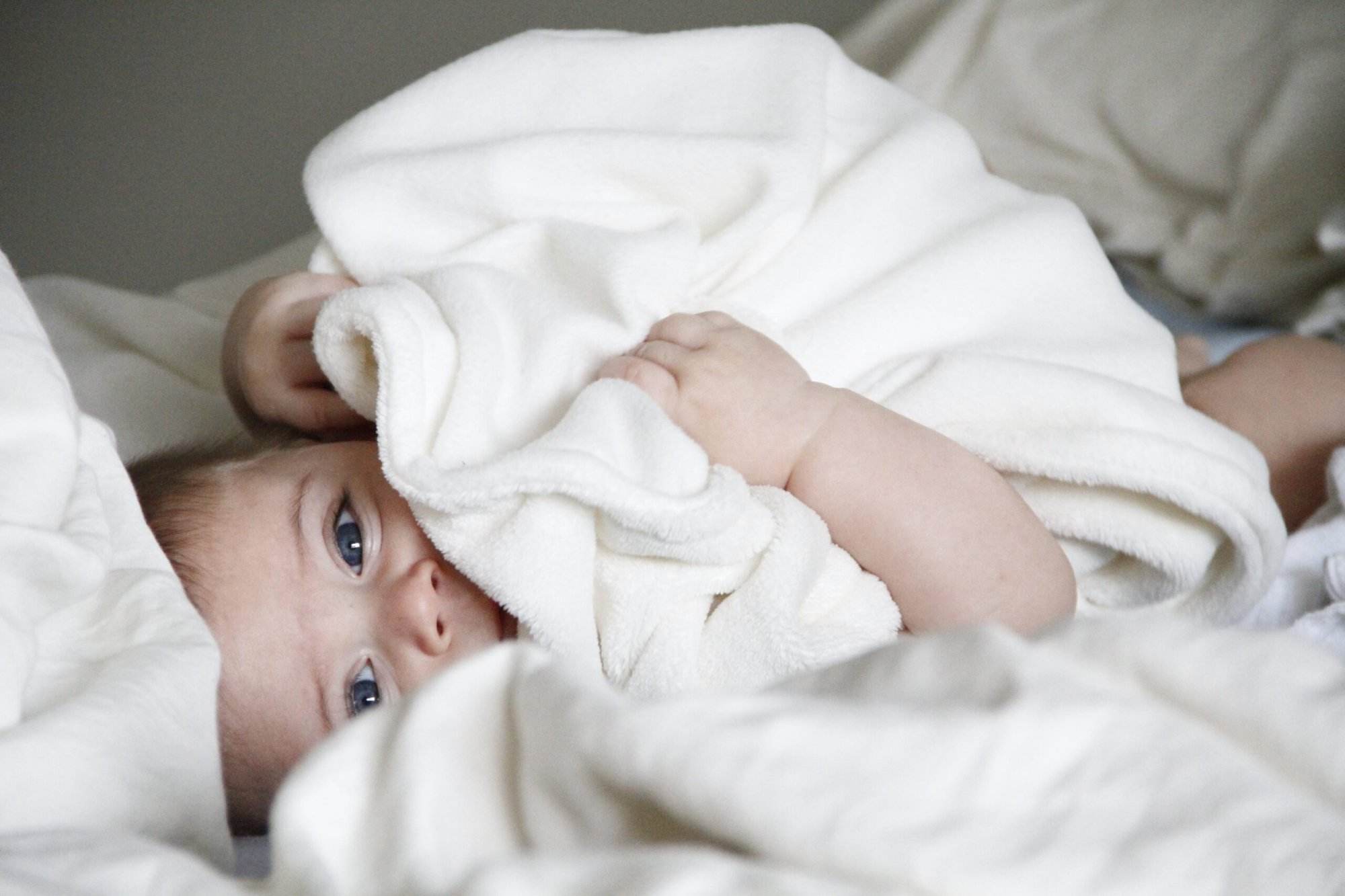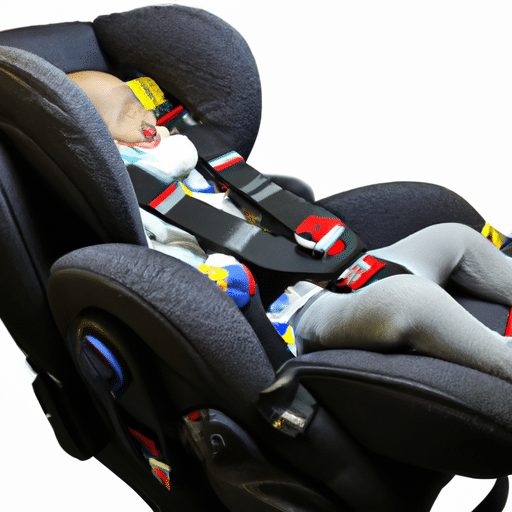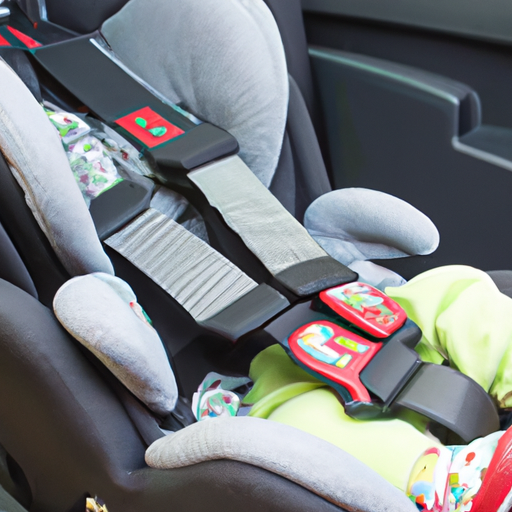So you’ve got a little one and you’re ready to hit the road! But before you embark on all those adventures together, there’s one important thing you need to know: how to properly put your baby in a car seat. Ensuring their safety is of utmost importance, and in this article, we’ll guide you through the steps so you can confidently secure your precious cargo and enjoy worry-free journeys.

1. Choosing the right car seat
1.1. Check the age and weight limits
When choosing a car seat for your baby, it is important to check the age and weight limits specified by the manufacturer. Car seats come in different sizes and designs, each tailored to meet the specific needs of different age groups. By ensuring that the car seat is appropriate for your baby’s age and weight, you can guarantee their safety and comfort while traveling.
1.2. Consider the type of car seat
There are various types of car seats available, each designed for different stages of your child’s growth. The most common types include rear-facing infant car seats, convertible car seats, and booster seats. Rear-facing seats are suitable for newborns and infants up to a certain weight limit, while convertible seats can be used in both the rear-facing and forward-facing positions. Booster seats are designed for older children who have outgrown their convertible seats. Consider your child’s age, weight, and developmental needs when selecting the type of car seat that best suits them.
1.3. Ensure it meets safety standards
Safety should be the top priority when choosing a car seat for your baby. Look for car seats that comply with safety standards set by reputable organizations such as the National Highway Traffic Safety Administration (NHTSA) in the United States or the European Safety Standard (ECE R44/04) in Europe. These standards ensure that the car seat has undergone rigorous testing and meets the necessary safety requirements to protect your little one in case of a crash.
2. Understanding the car seat manual
2.1. Read the manual thoroughly
Before attempting to install or use the car seat, it is crucial to read the manual provided by the manufacturer thoroughly. The manual contains important information on how to correctly install and use the car seat, as well as guidelines on weight limits, proper positioning, and adjustment of the straps and harness. It will also provide specific instructions on how to secure the car seat in your vehicle.
2.2. Familiarize yourself with the car seat parts
Car seats can be complex devices with multiple components and adjustments. Take the time to familiarize yourself with the different parts of the car seat, such as the base, the harness, the buckle, and the adjustment mechanisms. Understanding how these parts work together will help you correctly install and use the car seat, ensuring your baby’s safety.
2.3. Pay attention to installation instructions
The car seat manual will provide detailed instructions on how to properly install the car seat in your vehicle. It is crucial to follow these instructions carefully to ensure a secure and safe installation. Different car seats may have variations in their installation methods, so it is important to pay attention to the specific instructions provided in the manual.
3. Preparing the car seat
3.1. Adjust the straps and harness
Before placing your baby in the car seat, make sure to adjust the straps and harness according to their size. Check the manual for instructions on how to properly adjust the shoulder straps, chest clip, and crotch strap. The straps should fit snugly against your baby’s body, with no slack or looseness. It is important to ensure that the straps are not twisted and that they lie flat against your baby’s shoulders and thighs.
3.2. Position the car seat properly
Positioning the car seat correctly is essential for your baby’s safety and comfort. Ensure that the car seat is installed in an upright position, with the base parallel to the vehicle seat. It should not be reclined too far back or tilted at an angle. Proper positioning will provide optimal protection in the event of a crash and prevent your baby’s head from falling forward, which can restrict their airway.
4. Installing the car seat
4.1. Choose the right location in the car
The location of the car seat in your vehicle is critical for your baby’s safety. The safest place for a car seat is typically in the rear seat, preferably in the center position. This offers the most protection from side impacts. If using a convertible or booster seat, ensure that it is securely strapped to the vehicle seat and that it does not move excessively.
4.2. Place the car seat in the rear-facing position
For newborns and young infants, it is crucial to use a rear-facing car seat. This position provides the highest level of protection for their developing neck and spine. Make sure the car seat is firmly and securely installed in the rear-facing position, following the manufacturer’s instructions.
4.3. Install using seat belts or LATCH system
There are two common methods for installing a car seat – using seat belts or the LATCH (Lower Anchors and Tethers for Children) system. If using seat belts, thread them through the designated belt path and buckle them securely. If using the LATCH system, locate the lower anchors in your vehicle and attach the car seat’s connectors to them. Follow the manual’s instructions to ensure a proper and secure installation.
4.4. Ensure a secure installation
Once the car seat is installed, check for any movement or excessive looseness. Give it a firm tug from side to side and front to back to ensure it is securely fastened. The car seat should not move more than an inch in any direction. If you notice any looseness, recheck the installation and make the necessary adjustments until the car seat is tightly secured.

5. Dressing the baby appropriately
5.1. Dress the baby in lightweight clothing
When placing your baby in a car seat, it is essential to dress them in lightweight clothing. Bulky clothing, such as heavy jackets or snowsuits, can interfere with the proper fit of the harness and compromise its effectiveness in a crash. Instead, opt for thin layers that can be easily added or removed depending on the temperature.
5.2. Avoid bulky or thick outer layers
Bulky or thick outer layers, such as blankets or cushions, should be avoided when using a car seat. These can create excessive space between your baby and the harness, increasing the risk of injury in the event of a collision. Instead, use lightweight blankets or dress your baby in warm clothes before placing them in the seat.
5.3. Remove any blankets or cushions
Before securing the harness, carefully remove any blankets, cushions, or any other accessories from the car seat. These items can interfere with the proper fit of the harness and compromise the safety of your baby. It is important to ensure that nothing is obstructing the straps or buckles and that they are properly positioned on your baby’s body.
6. Positioning the baby in the car seat
6.1. Place the baby in the car seat facing the rear
For infants and young babies, it is crucial to position them in the car seat facing the rear. This enables the car seat to absorb the impact of a crash and provides maximum support for their head, neck, and spine. Ensure that the baby’s face is clear and not obstructed by any fabric or accessories.
6.2. Position the baby’s bottom and back correctly
When placing your baby in the car seat, make sure their bottom and back are snuggly positioned against the seat. The baby’s bottom should be all the way back in the seat, and their back should be against the seat backrest. This ensures proper support and prevents the baby from slumping or sliding down during the journey.
6.3. Fasten the harness correctly
Once your baby is properly positioned in the car seat, fasten the harness securely. The harness should be snug but not overly tight, allowing you to slide two fingers between the straps and your baby’s collarbone. Make sure the chest clip is positioned at armpit level to keep the straps in the correct position. Double-check that the harness has no twists or tangles to ensure optimal safety.

7. Adjusting the straps
7.1. Position the shoulder straps correctly
The shoulder straps of the harness should be positioned at or slightly below your baby’s shoulders. If they are above the shoulders, they may not provide adequate protection in the event of a crash. Adjust the shoulder straps according to your baby’s size, ensuring a proper and secure fit.
7.2. Ensure a snug fit
The harness should fit snugly against your baby’s body, with no slack or looseness. If the straps are too loose, they can allow excessive movement or even eject your baby from the car seat during a crash. On the other hand, if the straps are too tight, they can be uncomfortable and restrict your baby’s breathing. Find the right balance to ensure a snug yet comfortable fit.
7.3. Avoid loose or twisted straps
Before starting your journey, double-check that the straps are not twisted and that they lie flat against your baby’s shoulders and thighs. Twisted straps can compromise the effectiveness of the harness in a crash, and loose straps can allow your baby to move around excessively. Take the time to ensure that the straps are properly aligned and adjusted.
8. Checking for proper installation
8.1. Perform a thorough inspection
It is essential to perform a thorough inspection of the car seat installation before every trip. Check that the car seat is securely installed, with no movement or excessive looseness. Ensure that all straps, buckles, and harnesses are properly attached and adjusted. Look for any signs of wear, damage, or degradation, and address any issues immediately. Regular maintenance and inspection will ensure that your baby’s car seat remains safe and effective.
8.2. Check for secure attachment to the car
After installing the car seat, check for secure attachment to the vehicle seat. Ensure that the seat belts or LATCH connectors are tightly fastened and that there is no slack or looseness. Give the car seat a firm tug to test its stability. If it moves more than an inch in any direction, recheck the installation and make the necessary adjustments.
8.3. Verify the stability of the car seat
In addition to checking the attachment to the vehicle seat, verify the overall stability of the car seat. Ensure that it is securely locked into the base or anchored correctly, depending on the type of car seat you have. The car seat should not wobble or shift during normal driving conditions. If you notice any instability or movement, address the issue immediately to prevent potential injury to your baby.

9. Regularly monitoring the baby’s position
9.1. Keep an eye on the baby’s head position
During your journey, it is important to regularly monitor your baby’s head position in the car seat. The head should be well-supported and not tilting forward excessively. If you notice your baby’s head falling forward, adjust the angle of the car seat or add extra support with rolled-up blankets or towels to help maintain a comfortable and safe position.
9.2. Check for slumping or uncomfortable position
Babies have limited control over their body movements, especially during long car rides. Check for any signs of slumping or discomfort in your baby’s position. If you notice your baby’s body slumping to one side or if they appear strained or uncomfortable, make the necessary adjustments to provide better support and ensure a more comfortable journey.
9.3. Make necessary adjustments on long journeys
On longer journeys, your baby’s comfort and safety are paramount. Periodically stop and check on your baby to ensure they are in the correct position and that the car seat remains properly installed. Make any necessary adjustments to straps, padding, or overall positioning to ensure their comfort and well-being throughout the journey.
10. Seeking professional help if needed
10.1. Consult a certified Child Passenger Safety Technician
If you have any doubts or concerns about the installation or use of your baby’s car seat, it is always advisable to seek professional help. Certified Child Passenger Safety Technicians are trained in car seat safety and can provide expert advice on proper installation and use. They can help address any issues or questions you may have, ensuring your baby’s car seat is fitted correctly and provides the utmost protection.
10.2. Get guidance on proper installation and use
A Child Passenger Safety Technician can guide you on the proper installation and use of your baby’s car seat. They can demonstrate the correct techniques, answer any questions, and provide valuable tips to maximize your baby’s safety and comfort. Investing the time to consult a professional will give you peace of mind knowing that you are doing everything possible to protect your precious little one on the road.
In conclusion, choosing and correctly using a car seat for your baby is essential for their safety while traveling. By carefully selecting the right car seat, understanding the manual, properly preparing and positioning your baby in the car seat, and regularly monitoring its installation and your baby’s position, you can ensure a safe and comfortable journey for both you and your little one. Remember, when it comes to your baby’s safety, there is no room for compromise. Seek professional help when needed and follow the recommended guidelines to provide the best protection for your baby on the road.






